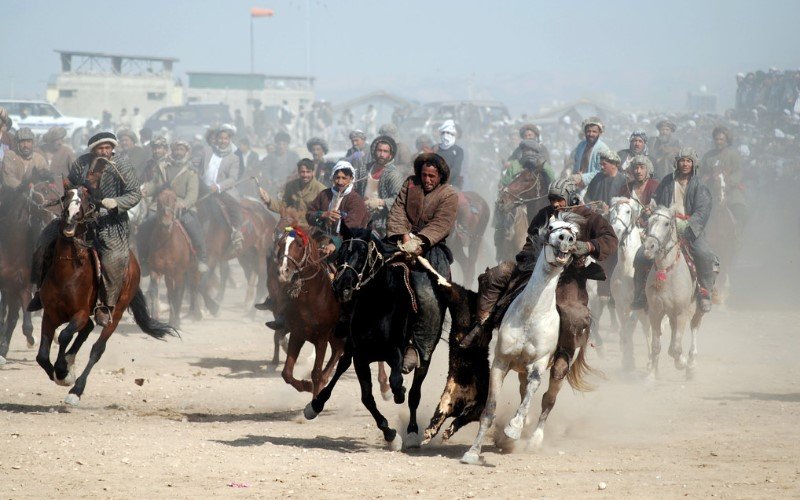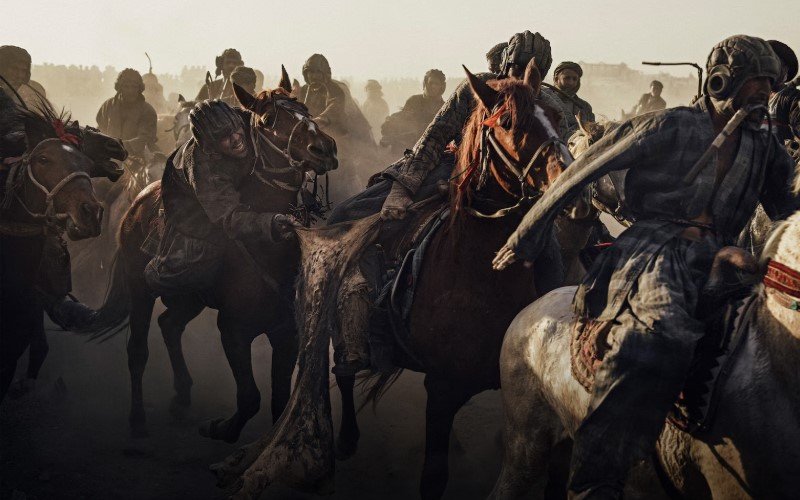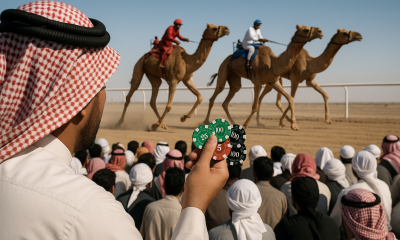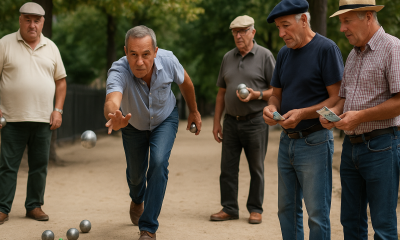around the world
Tajikistan’s Buzkashi: The High-Stakes Horseback Game

Buzkashi began among nomadic Central Asian tribes and is a game like no other. Some would call it barbaric, bloodthirsty and even primitive, but they cannot deny that Buzkashi has an unparalleled raw appeal, and for gamblers it is full of risk. It goes by many names, and Buzkashi can be found in one form or another in Tajikistan, Afghanistan, Uzbekistan, Kazakhstan, and Kyrgyzstan. Similar variants to the horse mounted sports include Kokpar, Kupkari, or Ulak Tartysh.
At its base, the game involves riders dragging a headless goat carcass across a field. And the goal is to bring it into the scoring circle, or to bring it away from the other riders. The tribal game is rough, involves brute force, and can easily see rider and horse alike receive painful injuries during play. Needless to say, Buzkashi is primal and archaic, rooted in centuries of tradition. And, gambling traditions and customs have built entirely based on games of Buzkashi.
Where Buzkashi Originated
This time old game traces back to the steppes of Central Asia, among nomadic tribes noted for herding and breeding horses. Turkic tribes, the mountaineous Tajiks, Afghan Pashtuns and other Farsi-speaking tribes all had their own variations of Buzkashi. The game spread as far west as Turkey, and as far east as western China, where there were yak buzkashi variants. The horse riding culture in these tribes was vital to their survival. These skills became a natural extension of their lifestyle. Strength, speed, agility and experience were all highly valued assets when it came to horseback riding.
So a game like Buzkashi was somewhat of a proving ground for these tribes. Raiders and herders alike could demonstrate their riding ability, dragging the heavy carcasses and fending off opponents. There are numerous types of Buzkashi, including those where riders worked in teams, and those that resemble more of a free for all. Or, the scoring system and how the winners were determined could vary. When it comes to sportsmanship, the lines were pretty blurred. Riders shouldn’t intentionally hit each other or deliberately knock opponents off their horses. But, as with other nomadic gambling forms, there was no universal rulebook or officials to regulate the games.

How Buzkashi Works
While it may not boast the same popularity today as it once did, Buzkashi is anything but an extinct sport. It is firmly rooted in Central Asian sports tradition and today there are modernized versions of the game. The concept of the game was quite unique, and nearly the same everywhere. This wasn’t your traditional animal racing event. In fact, it had very little to do with straightforward racing.
The goal of buzkashi is always for riders to pick up the goat (sometimes calf) carcass and bring it to an objective. Everyone chases after the same carcass, and so you get a bit of a tussle and scrum. Riders could grab the carcass or lock it between one of their legs, and they would carry whips and protective gear to not get injured. But bones could be broken here, and both rider and horse were at risk of serious injury.
So when talking about variants, first, we should distinguish two major types of Buzkashi. The Tudabarai and the Qarajai.
Variants with Different Goals
In Tudabarai, the goal is to grab the carcass and get away from your opponents. A player holding the carcass who is clear of the opponents scores points. They will have to fight their way out of the scrum and try to keep the carcass intact while escaping from the others.
Qarajai is more straightforward, as players must carry the carcass around a flag or marker, and then throw it into the scoring circle. This is a bit like a hold the flag scenario, only you need to take the flag to a post, and then return it to the other side of the map before throwing it into a scoring circle. Again, riders will need to beat the competition and try to hold onto the carcass. These games could last longer, and traditional nomadic Buzkashi could last anywhere from a few hours to days.
Buzkashi Teams vs Free For All
Then, we have to distinguish the “free for all” from “teams” Buzkashi. The traditional games were free for alls where players had to seize the goat individually and carry it to the scoring line (or clear of the opponents). In Tajikistan, this is the most common type of buzkashi. While riders could unite to break the scrum or help each other out, it was not favored by viewers. This was a display of strength after all, and the strongest rider was expected to outwit and fend off the entire pack.
In modern buzkashi, where rules are established and referees officiate games, most variants use teams. In Kyrgyzstan, they use teams of 4, with up to 8 substitutes (both horses and riders). Afghan buzkashi has 10 team squads, with teams utilising 5 riders at a time on the field, and they can change the lineups at the half time. Fields are standardized, and the Kyrgyzstan buzkashi also featured goals (kazan), just like in soccer.

Is Buzkashi Still Around Today
The efforts to regulate and standardize buzkashi are quite controversial. After all, this was not supposed to be an organised game of polo or “lacrosse on horseback”. Buzkashi is exhilarating because it is messy, with riders wrestling the corpse from each other, knocking each other down, and it is brutal more often than not. Nowadays, you can find the modern game in more urban areas, but the rural regions and countryside still stick to the more traditional versions of buzkashi.
Kok-boru, a Krgyz version of Buzkashi, features in the World Nomad Games. These are a form of international Olympics, but only extend to nomadic and traditional games. They also feature mounted archery, a Turkish version of Mancala, various wrestling sports, and even Mongolian ankle bone shooting (a dice throwing games). Buzkashi also reached the US, through the Afghan Royal Family back in the 1940s. But instead of using a carcass, it uses a sheepskin covered ball, and has more resemblance to polo than traditional buzkashi.
The original game is harder to come by, but you can still find it at festivals, ceremonial events and even at political events. It is common for influential and wealthy figures in those societies to host games or sponsor teams, horses or riders.
Gambling Traditions Behind the Aggressive Games
As you probably guessed, the betting traditions around buzkashi were not formalized with odds and bookmakers. At least, not in the original games. Any bets on games would revolve around livestock or goods, which bettors would barter and trade. Sure, there could have been strategic angles for clever punters to bet on. And as it was all informal, they could put up their livestock or land, and propose goods in return from any takers. Without a sportsbook to privatize the wagering, it was more like an old-school betting exchange or market.
And if you backed the right rider, you carried wisdom and insight, which were highly praised in many communities. Riders themselves could also take part of the betting action too, not just putting their life on the line in the dangerous sport, but also adding motivation to win and a neat little payday if they powered through. These kinds of wagers, and any forms of nomadic gambling, would be controlled and honored by the communities. If you refused to pay out a winner, you were dishonoring your word. And excessive betting or any form of addiction could translate to weakness. After all, this was first a game of honor. Any gambling element was secondary to the showing of strength and skill.
Modern Gambling on Buzkashi
The same kind of personal or social wagering still remains today. Because this is not like horse race betting, taking punts on polo, or betting on any other kind of sport. Anything can happen in buzkashi, and a rider with quick wits, speed, and strength, and just a hint of luck can run away with the carcass and seal the win. Therefore, even in the modern regulated games, you won’t find books taking odds.
Wagers can be exchanged with the shake of a hand or on the honor of someone’s word. It doesn’t just include petty goods, but can also involve herders trading horses and even land. Who will win is perhaps the most straightforward bet, but there are loads of proposition bets people could offer or take. For instance, which riders will be knocked off their horses, how long the game would last (for games with no time restrictions) or who would score first.

Are There Similar Games to Buzkashi
There are games with a similar, let’s call it DNA, to buzkashi. These bring the same kind of thrills and with that, potentially R-Rated gore and brutality. When thinking of buzkashi, you could stretch the comparisons to include:
- Bullfighting/Corrida de Toros (Spain and Mexico)
- Rodeo Bull Riding (USA, Brazil)
- Jallikattu (India)
- Nadaam Games (Mongolia)
Buzkashi is not a million miles away from chariot racing either. That, and none of the other games above are for the faint of heart. They would definitely not pass Western animal safety or hygiene standards. But buzkashi was never meant to be a clean sport. The roar of the crowd, clash of the scrum and fierce races in the game make for one pulsating adrenaline pumping experience.













